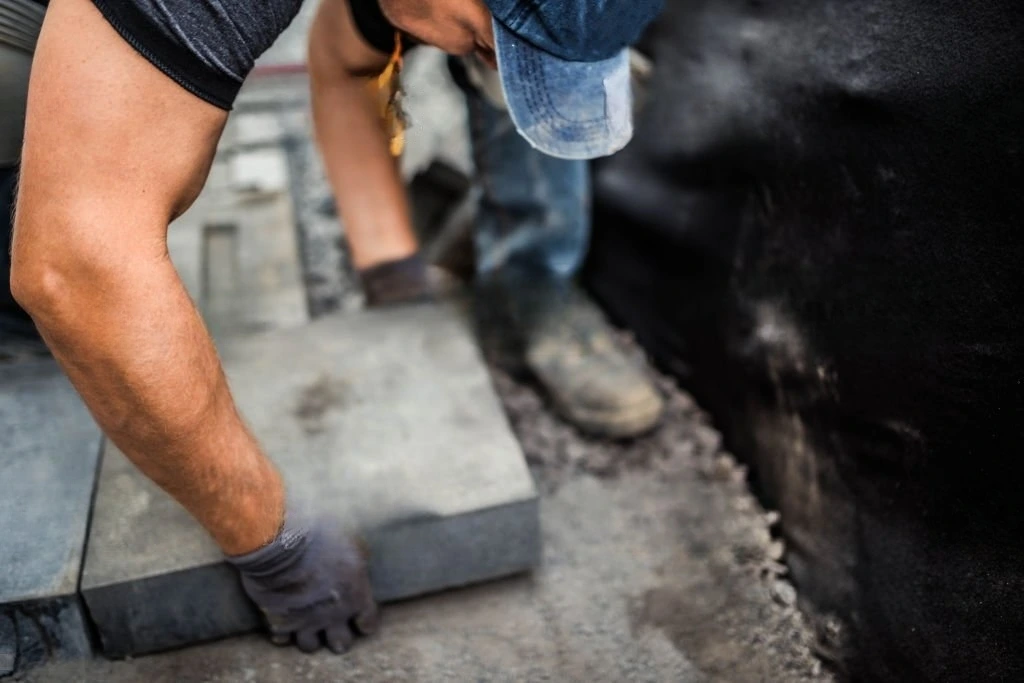Are you looking to create a visually appealing and functional outdoor space that’s safe from soil erosion? Building a retaining wall may be the solution you need! A retaining wall not only adds a stunning feature to your yard but also serves a crucial function in supporting soil and preventing erosion.
When it comes to designing your retaining wall, the possibilities are endless. From classic and modern to rustic and natural, there are various retaining wall designs to choose from that will complement your landscape’s style. However, the most important aspect of building a retaining wall is ensuring that it is structurally sound and durable.
One of the most popular materials used for retaining walls is concrete retaining wall blocks. These blocks are strong and durable and come in a range of shapes, sizes, and colors to suit your preferences. Additionally, concrete retaining wall blocks are easy to install, making them a favorite for DIY enthusiasts.
If you’re planning to build a retaining wall using concrete blocks, there are several crucial steps you’ll need to follow to ensure that your wall is sturdy and stable. These steps include preparing the site, laying the foundation, installing the first course of blocks, and adding subsequent courses until you reach the desired height.
We’ll provide you with a step-by-step guide on how to make a retaining wall using concrete retaining wall blocks. We’ll cover the materials you’ll need, the tools required, and the critical steps involved in constructing a sturdy retaining wall that will last for years to come. So let’s get started!
What Is Retaining Wall?
A retaining wall is a type of structure that is used to hold back soil and prevent erosion. They are commonly used in landscaping, construction, and civil engineering projects to stabilize slopes and create level areas. Retaining walls come in various designs and materials such as concrete retaining wall blocks, timber, brick, and natural stone.
Concrete retaining wall blocks are among the most popular materials used in retaining wall designs. These blocks are durable, low maintenance, and easy to install. They come in a variety of shapes, sizes, and colors, allowing for a wide range of design options.
Retaining wall blocks can be used to create a wide range of designs, including curved, straight, and terraced walls. They are also commonly used to create raised garden beds and to provide seating areas in outdoor spaces.
When designing a retaining wall, it is essential to consider factors such as soil type, water drainage, and load-bearing capacity. A poorly designed retaining wall can be unstable and may fail, causing damage to property and potentially endangering people.
Retaining walls are an essential part of many landscaping and construction projects, providing both functional and aesthetic benefits. Whether you’re looking to create a terraced garden, stabilize a slope, or provide a seating area in your outdoor space, concrete retaining wall blocks offer a versatile and durable solution. By considering the important factors in designing and installing a retaining wall, you can ensure a safe and long-lasting structure that adds value to your property.
How Much Do Retaining Walls Cost?
Retaining walls are an essential landscaping feature that can serve both functional and aesthetic purposes. They are used to hold back soil and prevent erosion while adding beauty to outdoor spaces. However, one of the primary concerns for homeowners when considering retaining walls is the cost. In this blog, we’ll discuss how much retaining walls cost and the factors that can affect their price.
Retaining walls come in various designs and materials, including concrete retaining wall blocks, stone, brick, timber, and more. The cost of building a retaining wall depends on the type of material used, the size of the wall, and the complexity of the design.
Concrete retaining wall blocks are a popular choice for retaining walls because they are cost-effective and durable. The cost of concrete retaining wall blocks typically ranges from $10 to $15 per square foot, including installation. However, the price may vary depending on the design and additional features such as drainage systems, lighting, and landscaping.
The cost of retaining walls also depends on the size of the wall. A small retaining wall measuring 10 feet long and 4 feet high may cost between $400 and $800, while a larger retaining wall measuring 50 feet long and 8 feet high may cost between $7,000 and $10,000.
Other factors that can affect the cost of retaining walls include the location of the wall, the labor costs, and any necessary permits or inspections required by local building codes.
The cost of retaining walls varies depending on several factors, including the material used, the size of the wall, and the design complexity. Concrete retaining wall blocks are a popular and cost-effective option, but homeowners should also consider other materials and features that can enhance the functionality and beauty of their retaining walls.
How To Build A Retaining Wall On A Hill?
Building a retaining wall on a hill can be a challenging project, but with the right tools, materials, and techniques, it can be accomplished successfully. Retaining walls are essential to hold back soil and prevent erosion, and they can also be an attractive addition to your property. In this blog, we will explore the basics of building a retaining wall on a hill, including retaining wall designs, concrete retaining wall blocks, and other essential considerations.
The first step in building a retaining wall is to assess the site’s conditions, including the soil type, slope, and drainage. Once you have a good understanding of the site’s conditions, you can begin to plan your retaining wall design. There are many retaining wall designs to choose from, including gravity walls, cantilever walls, and anchored walls. The design you choose will depend on the height and slope of the hill, as well as the materials you plan to use.
One popular material for building retaining walls is concrete retaining wall blocks. These blocks are available in a variety of sizes, shapes, and colors. Making them a versatile choice for many different types of retaining walls. When selecting concrete retaining wall blocks. It is essential to choose blocks that are rated for the height of your wall. And that are suitable for your site’s soil conditions.
Other essential considerations when building a retaining wall on a hill include proper drainage, backfill materials, and soil compaction. It is crucial to ensure that water can drain away from the wall to prevent damage and erosion. Backfill materials, such as gravel or crushed stone, can help to improve drainage and stability. Soil compaction is also critical to ensure that the wall stays in place and does not shift over time.
Conclusion:
Building a retaining wall on a hill requires careful planning and attention to detail. By selecting the right retaining wall design, materials, and techniques. You can create a functional and attractive retaining wall that will provide long-lasting stability and protection for your property.





